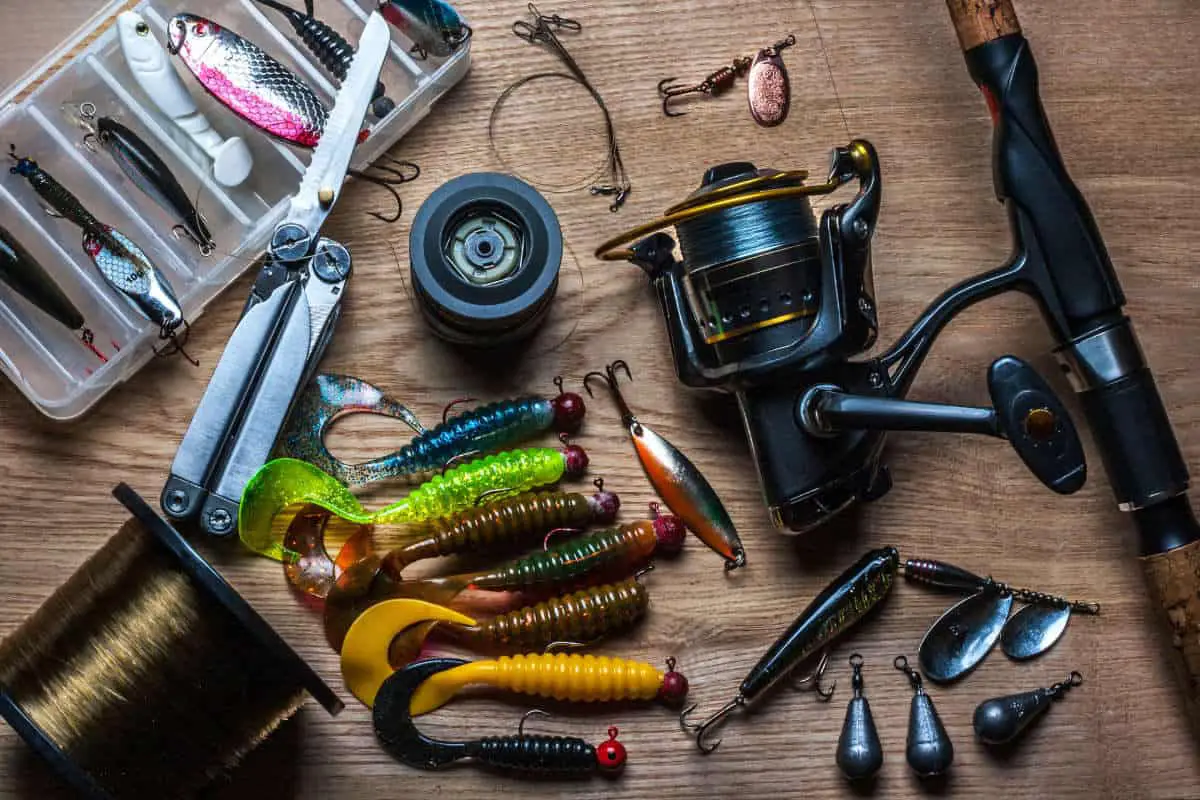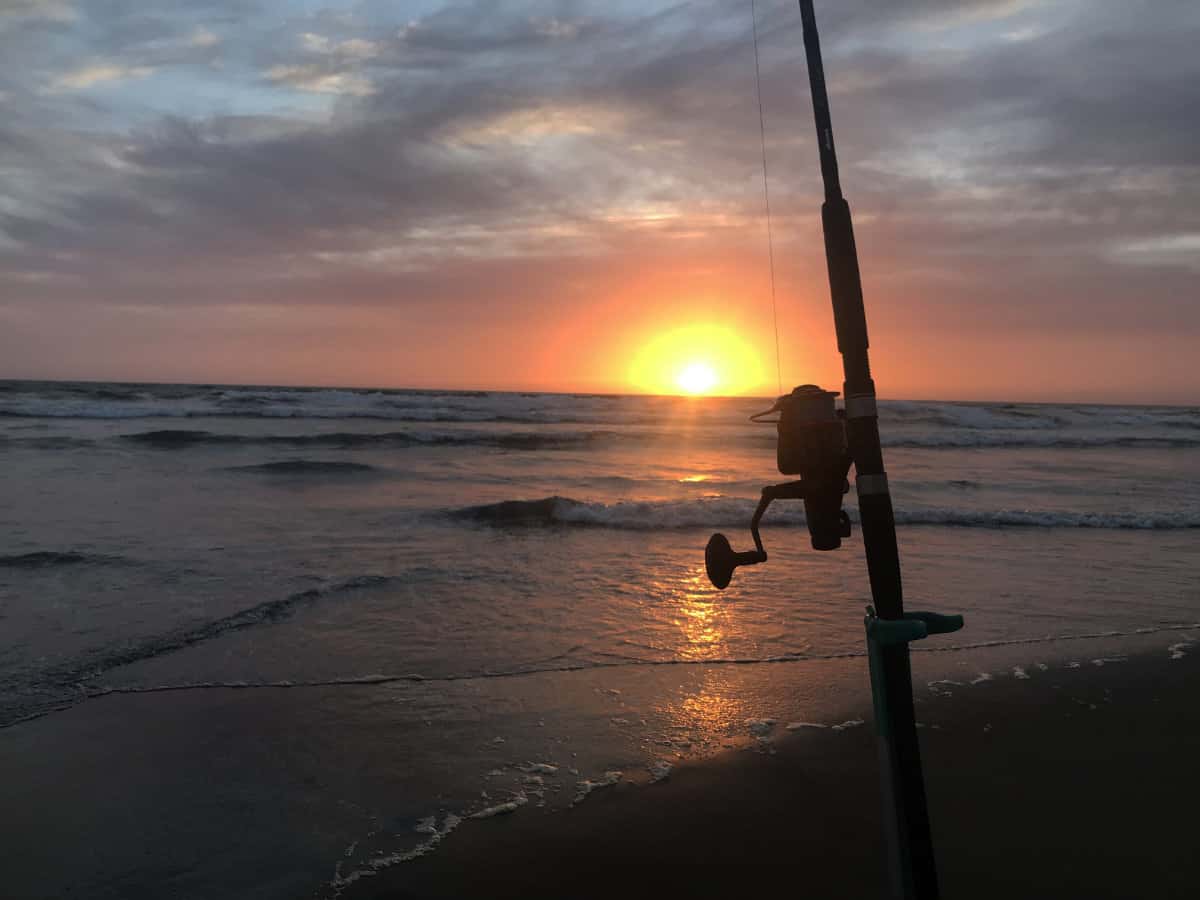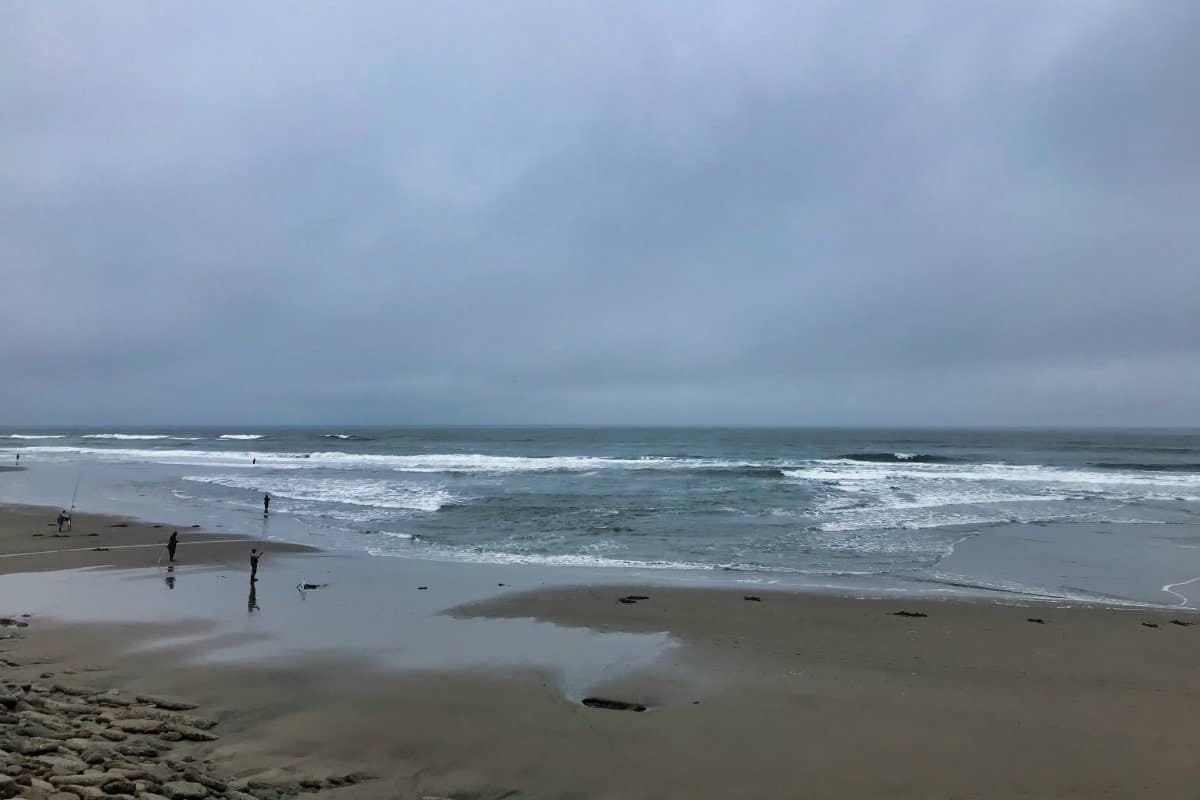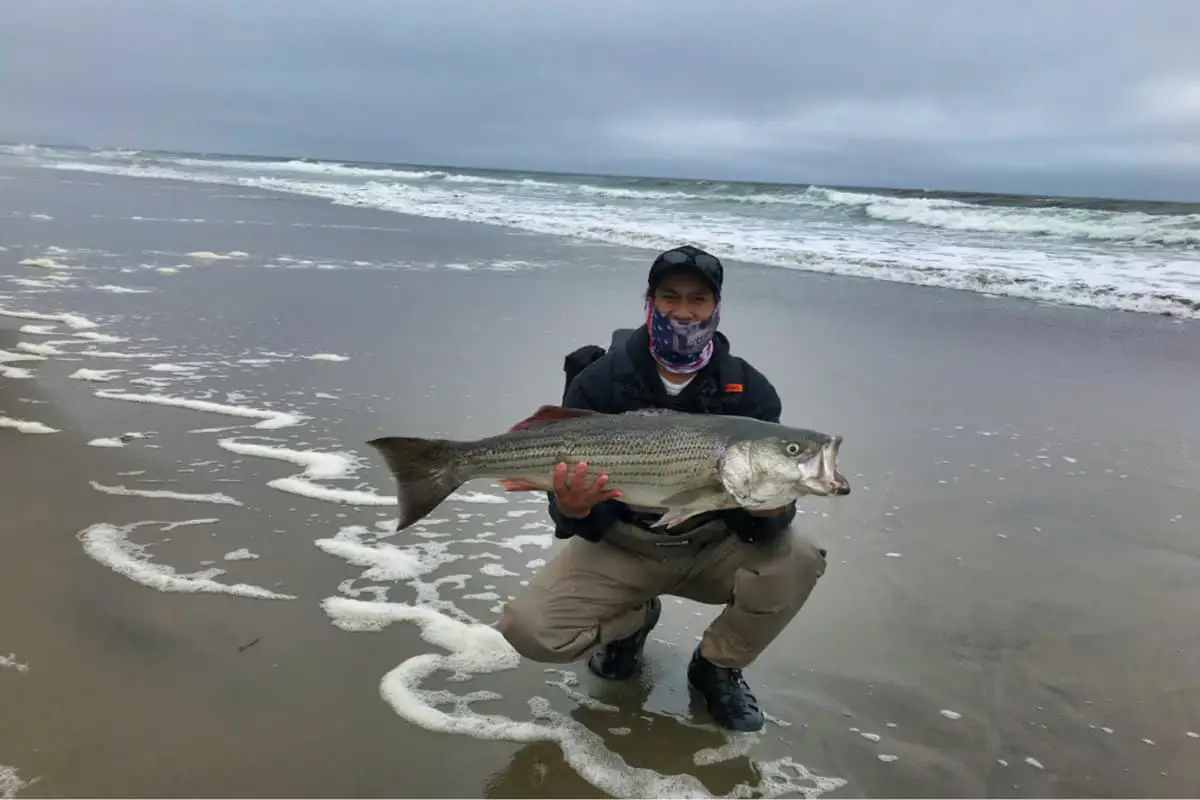If you love fishing like I do but do not want to shell out the money for a boat or have the time for a boat’s upkeep, you have other options. While fishing out on the water is great, it simply is not realistic for many. Luckily, you can catch just as good of fish from the shore with a little guidance.
This is why I have created the ultimate guide on how to catch big fish from the shore.
You should never let the lack of a boat stop you from being successful, and you can find quality fish from the beach of most ponds, quarries, rivers, lakes, and more. When it comes to shore fishing, there are several essential things to keep in mind, including:
- Where You Are Fishing the Gear, You Take Along
- When You Fish
- The Shoreline Itself
I will gladly further delve into these areas and how you can use this to catch quality fish right from the shore. So, stop worrying about saving for that boat and start doing the sport you love.
The Basics of Shoreline Fishing
Before we dive deeper into the specifics of what allows you to catch quality fish from the shore, we will talk more about the basics. There are a few fundamental rules you should remember when you hit the shoreline for your big fishing adventure; those are:
1 – Do A Quick Walk Around the Shoreline
Whether you know the location, you are fishing, or you decided to make a day of a new spot, knowing the shoreline is key to catching fish. First things first, you should do a quick stroll around the perimeter of the water and look for anything that stands out as a right fishing spot. These areas will have things like vegetation, laydowns, docks, etc.
2 – Stay Low
If you are fishing in an area that does not have much cover, your shadow on the water can alert the fish that you are there. If you do have some options in the way of coverage, you should try to stand next to a tree, dock, grassy hill, etc. On sunny days, try to avoid casting your shadow on the water to stop scaring away any fish nearby.
3 – Downsize Your Bait
It’s crucial to remember that when you fish by the water’s edge, you should reflect on the types of fish that would frequent these areas. You are not fishing in immense depths that you would when out on a boat, so you should not be using large bait. You will want to downsize the bait you would use while out in deeper waters and utilize bait that makes sense for the fish you are after in the area you are in.
4 – Cast Parallel to the Shore
A crucial mistake many shore fishers make is that we like to cast deep into the middle of the water, but this is not where the fish will be. In most waterways, the fish tend to hang out near the shore or on a drop-off nearby. You will want to cast parallel to the beach to stay in the strike zone longer.
5 – Pack Lighter When Shore Fishing
When you go out on a boat, you can bring practically anything you want because your boat hauls the heavy load for you. However, when you have to carry out your items, you want to pack lighter and stick to the main things you will need. Most who fish regularly will know the basics they need for fishing, but we will get into further detail about this just in case. However, the last thing you want is to have to carry out a ton of gear after a lengthy and hopefully successful day of fishing.
The Equipment You Will Need to Catch Big Fish from the Shore
Before ever stepping foot on the bank, you want to know you have the right gear to bring along. As mentioned, most of us who fish regularly know this and have our own collection of quality fishing gear. However, if you are used for boating fishing, it can be hard to narrow down your selection to just the necessities.

The essential equipment needed to ensure you have a quality fishing trip are:
- A rod and reel
- Tackle and bait
- A sharp knife
- A bucket to keep any catches you would like to keep in
- Spare line
- A long-nosed plier
- Cloth to wipe your hands-on
- Small first aid kit for any mishaps
- And of course, your fishing license
Choosing Your Rod and Reel
You cannot catch quality fish without a quality rod and reel. If you are not using the right equipment needed, you are already putting yourself at a disadvantage. The two main types of fishing rods and reels![]() that you will find on the market today. Those are multipliers and fixed spools.
that you will find on the market today. Those are multipliers and fixed spools.
Multipliers –
- Can cast at a longer distance
- Better for heavier lines but not good with lighter lines
- Suitable for rougher ground fishing
- Not ideal for night or evening fishing
- Unforgiving with casting errors
Fixed Spools –
- These are the best for forgiving casting errors
- Great for use with lighter lines but not great for heavy lines
- Ideal for sandy-bottom fishing, not suitable for difficult grounds
- Good for night fishing
- Ideal for beginners
Choosing the Best Line for the Job
Every good fisher has been there. You finally hook into what seems like a promising catch, and your line breaks during the fight to the shore. Choosing a quality line can help you avoid missing a good fish and can keep you fishing for longer.
If you fish regularly, you may already know which type of line and the weight of the line you prefer. However, the average fishermen will use a 15 to 20-pound line. Make sure to use a line that can handle the fish that you are after. And check any specifics on your reel to see that you are not overloading it.
Specifically, you want to check any multiplier reels to check the recommended line, as this can vary each time. Regardless of the weight, you want to ensure that you are purchasing a line from a quality brand that will last and work well for you. You should always keep some extras of this line on hand to use in case yours does break, or you get snagged up.
Creating the Best Tackle Box
A huge part of fishing is having the best tackle box possible to catch the fish with. Of course, any bait you use will vary significantly based on the type of fish you are trying to catch. Most do not go out and start catching fish you are not familiar with, but if you do not know what the fish you are after like, research it.
However, should you take up the sport of shore fishing, you should have a good tackle box ready. You want to start by having a quality tackle box itself that can carry everything you need and has a good handle for packing in and out of your fishing spot.
Some of the key things you need to fill your tackle box with are:
- Two or more lures
- Two more different sets of hooks
- A variety of weights and several
- The long-nosed pliers and knife previously mentioned
- Your spare line
- Packet of swivels
- The bait of your choosing
Check out another great article that can show you more about designing the perfect tackle box with more in-depth examples of what you need at Torbay Fishing.![]()
Bring Along a Tripod
If you plan to shore fish pretty regularly, a lifesaver is a quality tripod. These are ideal if you are fishing somewhere that you may hook into a larger catch. These are mostly seen when beach fishing, as they are the best way to stabilize your pole for reeling in a large catch.
There are a variety of tripods out there that you can use for shore fishing, some have extending legs for better attachment. These tripods hold your rod for you, great for keeping it steady for a longer period and giving your arms a break. This also frees up your hands to do other things while you wait for a fish.
Of course, tripods are not completely necessary, and many use a sand spike to work in the place of a tripod. The sand spike is ideal when you are fishing on a sandy beach. After using one a few times, this became a regular in my list of fishing gear.
When is The Best Time to Shore Fish – and Other Tips

In essence, anytime is a good time to fish, and any extra time you have for fishing is great. However, some circumstances are better than others when it comes to harvesting some big catches. Much of this depends on the location and type of fish you are trying to catch.
Regardless of location and species, you cannot go wrong with fishing at dawn and dusk. Ideally, though not often conveniently, dawn is the better of the two times. Many fish like higher water so times around a new moon or full moon can also be pretty good and paying attention to the tides can be helpful during the day.
As mentioned, several times now, you need to know the fish you are hoping to catch. Some fish like lower tides, and some fish prefer higher tides. Also, some fish will move further towards the shore when they are on the nest, which can help you catch more fish.
Analyze the Shore Structure
When you have the convenience of a boat, you can easily get from one location to another quickly and easily. However, when you choose to shore fish, you have to be prepared to find your spot, and it can be very challenging to move locations. Anytime you need to move, and you will have to repack up your items and carry them to your new area.
Find an Area for Easy Casting
As mentioned, you want to find an area that has decent coverage if you are fishing in the brighter hours of the day. This is the best way to avoid your shadow scaring off fish. You will also want to find areas that show signs of fish activity and set up there.
When you find a quality spot, you want to ensure you can cast down the bank. If you know that you are not the best at casting, you will want to avoid any low hanging limbs or areas that you may snag on. This can help you cast down the bank more easily without your hook getting caught on any unwanted shrubbery.
Though we touched on this, you should cast down the bank and not necessarily out into the water to have the best chance of catching quality fish. If you have ever fished out on a boat, you know most boaters drift or anchor close to the shore to fish. This is because most fish like to hang out near the shore, which you have an advantage of when you fish straight from the shore.
Learn The topography of the Bottom of the Water
Though it can be challenging to learn the exact topography of the bottom of the water, this is something you do want to have a basic understanding of. When you know more about the topography of the bottom, you can better understand where the fish will be hiding out. Since you cannot see everything from above the water, there are some things you can look for.
Many larger bodies of water have topographic maps available that allow you to look for the different features present and can help you decide where to fish. If your waterway of choosing does not readily have topographic maps available, you can make some basic assumptions based on the landscape.
You can figure out where fish may be hiding out based on the shoreline.
There are many great resources like this one: The Online Fisherman![]() . To learn more about topography and how it can impact your fishing trip. Those who catch fish usually do so because they are in the area where fish are. While this can have a lot to do with luck, starting in a good spot is vital.
. To learn more about topography and how it can impact your fishing trip. Those who catch fish usually do so because they are in the area where fish are. While this can have a lot to do with luck, starting in a good spot is vital.
Topographic Features to Look For When Fishing

If you can find a map of the waterway you are considering fishing, there are a few key things you should look for.
Some of these areas may not be accessible from the shore, but many are, which can be very useful when you plan your trip. While different fish species will like different things, these features can give you a good chance of getting a big catch.
Four of the essential features you want to look for are:
- Drop-offs and Ledges – Reading topographic maps to a beginner can be challenging, but closely grouped contour lines usually mark these areas. You will see a rapid increase in depth. Ledges may have a larger distance between but will have quick changes in depth.
- Points – This is where the shore extends out into the water to form a point, a great place to set up shop when fishing from the beach. If you can fish off of the point, you are probably in a great spot, but these are a common area for many anglers to seek out. This is an excellent location for bass fishing.
- Underwater Humps – You can identify these humps by small circles of ovals that should be marked with a depth that is less than the water around the area.
- Riverbeds and Creeks – To identify riverbeds and creeks within the water, you should find long-running spots that are deeper than surrounding water. Often these will have shallower lines on both sides and can look like a valley.
Don’t Be Afraid to Get Wet When Fishing from the shore
While you want to be aware of the waterway you are fishing to stay safe, don’t be afraid to get out there into the water. There are times when you need to get wet to get a good catch. You can Wade out a few feet into the water to reach a good point, sand bar, or shallow depending on the area; you are fishing.
To reach new areas from the shore, you simply need a good pair of waders or water shoes that are good for wading. Protecting your feet is critical, but if you are fishing during warmer months, you will not need much else as far as extra gear goes. If you have done everything mentioned and you still aren’t getting a good catch, take a walk into the water and get a better angle.
Overall, if you can’t go out and purchase your dream boat today, you can still catch a great fish. Simply follow this guide, combining the basics, quality gear, and excellent topography to enjoy your shoreline fishing.

